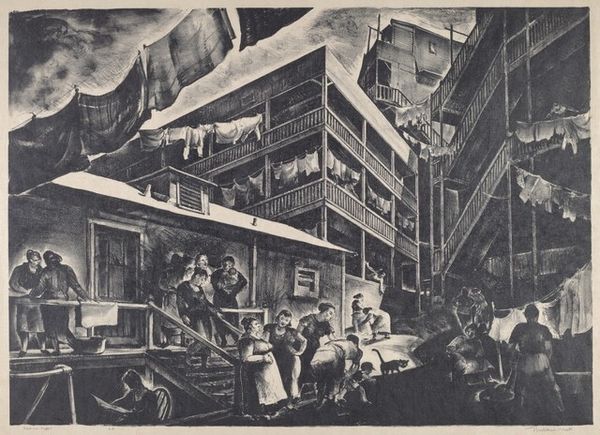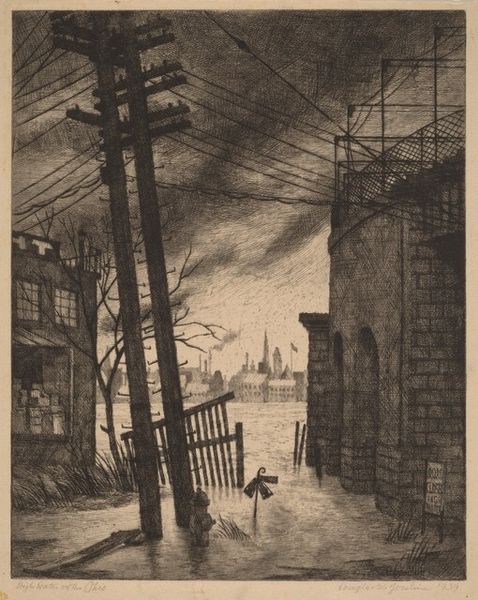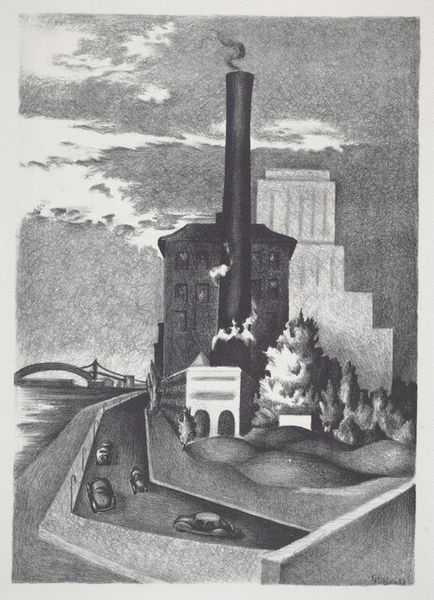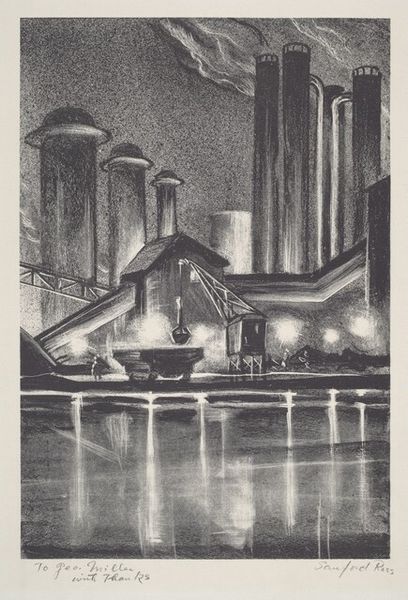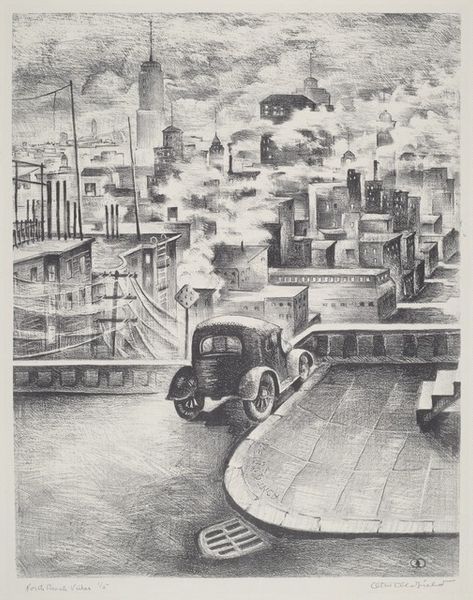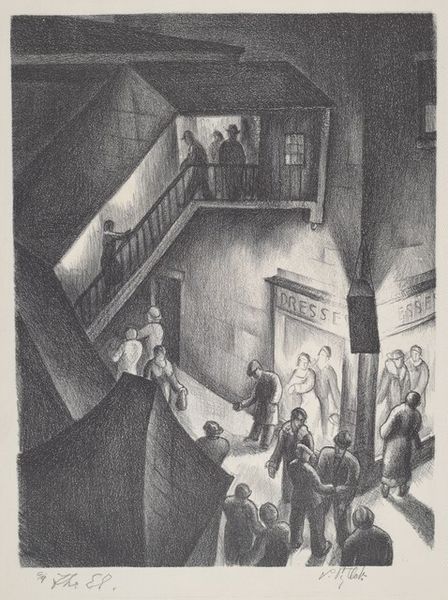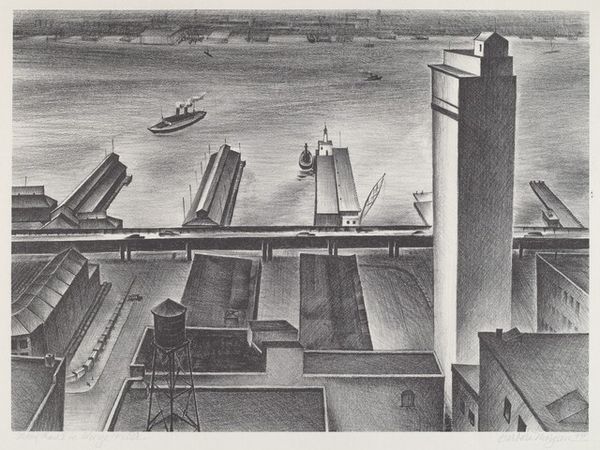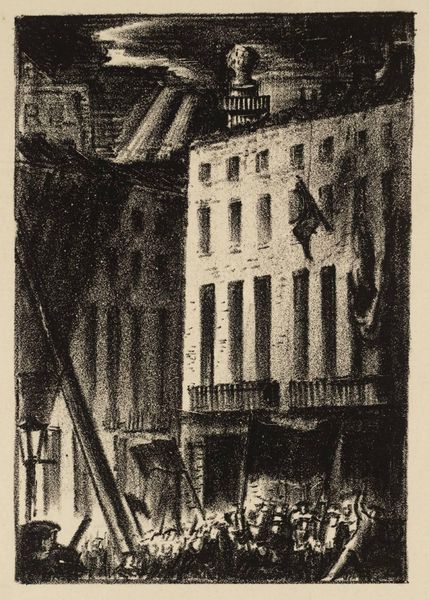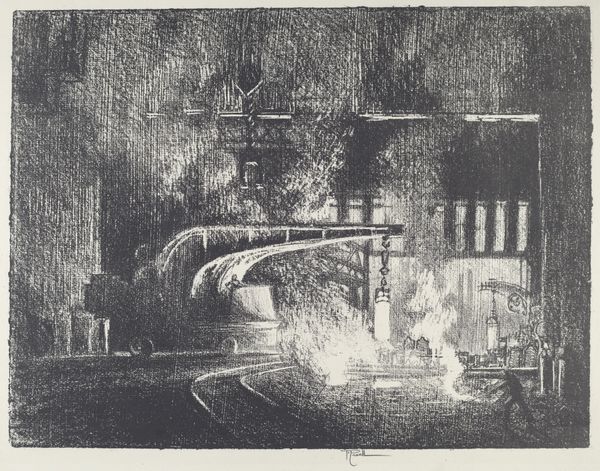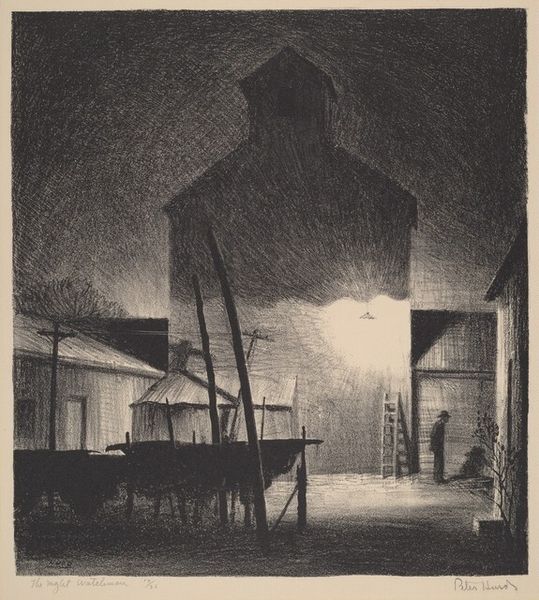
drawing, print, graphite
#
pencil drawn
#
drawing
# print
#
pencil sketch
#
landscape
#
ashcan-school
#
graphite
#
cityscape
#
realism
Dimensions: Image: 490 x 378 mm Sheet: 545 x 420 mm
Copyright: National Gallery of Art: CC0 1.0
Editor: Herschel Levit's 1938 print, "Textile Mills Kensington," captures a stark cityscape. The smoke billowing from the mills creates a somber mood, despite the children playing in the street. It is rendered mostly in grayscale, and is heavily contrasted. How do you read the symbolism of industry against the daily lives of people here? Curator: The juxtaposition is precisely where the symbolic weight lies. Smoke stacks weren't simply part of the landscape; they symbolized progress, employment, and economic stability. Yet the smoke, even in a rendering such as this, also hints at something darker: pollution, the relentless march of industrialization, and a kind of oppressive weight bearing down on the very community it sustains. Does the seemingly innocent game these children are playing also remind you of an escape? Editor: Absolutely, especially as it's set against the backdrop of those looming factories! But I am left wondering why the composition of children playing with telephone polls overhead feel like conflicting themes within this one scene? Curator: Precisely. Those telephone poles almost become crucifixes with their horizontal cross-sections. The energy of that implied movement is trapped as though crucified. It speaks to a larger, more persistent memory that the generation depicted can only sense from the margins. What do you make of the lone cyclist on the lower portion of the drawing, who contrasts so vividly against these group scenarios? Editor: I feel he may indicate some autonomy of progress amid a static group, given their proximity in relation to one another. It suggests individual opportunity amongst societal stagnation, a fleeting moment in a community so tightly wound up in its traditional infrastructure. Curator: Precisely. See how these familiar shapes, a street corner, telephone pole, a factory can be so laden with the past, influencing, even defining the present? What seemed like a simple cityscape is, in reality, a powerful convergence of memory, experience, and expectation.
Comments
No comments
Be the first to comment and join the conversation on the ultimate creative platform.
